Table of Contents
✔ Backfilling in a Foundation is defined as reusing or replacing the soil removed during construction to strengthen the foundation or other structural members.
A. What is backfilling in a foundation?

✔ Backfilling in a foundation is the process of filling the excavated area around a foundation with soil or other material.
✔ During the construction process, the stage of backfilling is of supreme importance as it contributes essential mount to the foundation and averts any settling issues.
✔ Moreover, it conforms as a protection against dampness and erosion. The materials operated for backfilling rely on the site’s project specifications and soil type.
✔ These may include sand, Gravel, soil, or crushed stone. For example, in the case of sandy soil, using Gravel may be necessary to deter the backfill material from washing away.
B. What are the benefits of backfilling in the foundation?

| Benefit | Description |
| Support and Stability | ✔ It strengthens and supports a foundation, preventing its shifting and settling. |
| Protection | ✔ It is a protective barrier to preserve a foundation from weather, erosion, moisture, and environmental factors that maintain long-term integrity. |
| Insulation | ✔ It gives insulation against harsh temperature fluctuations and regulates the building’s interior temperature. |
| Drainage | ✔ It improves the drainage system from moisture-related problems like basement flooding or damage. |
| Preventing Settlement | ✔ It prevents uneven settling of the foundation and avoids structural issues over time. |
C. What are the factors Affecting Backfilling in a Foundation?
The three essential factors that affect the backfilling in the foundation:
✔ Selection of suitable backfill material
✔ Compaction of the backfill material
✔ Selection of the period of backfilling
D. What is the procedure for Backfill in a foundation?

| Step | Description |
| 1. Curing Foundation | ✔ Allow the foundation to cure for at least 5 to 7 days before backfilling to prevent cracking. |
| 2. Ground Preparation | ✔ Ensure the ground where backfilling will occur is thoroughly cleaned; remove water if present. |
| 3. Material Selection | ✔ Choose a suitable backfill material based on engineering properties and site conditions; consider using excavated earth if feasible. Ensure it’s clean and debris-free. |
| 4. Using Excavated Material | ✔ If possible, use excavated earth as backfill material to reduce overall costs, but ensure it’s clean and debris-free. |
| 5. Starting Backfill | ✔ Begin backfilling from the corners and evenly spread the fill material. |
| 6. Compaction | ✔ Use an excavator to fill materials up to 12 inches on the sides, then compact thoroughly using a compaction roller or suitable equipment. |
| 7. Layered Backfill | ✔ Perform backfilling in subsequent layers with a 15 to 20 cm thickness. |
| 8. Watering and Compaction | ✔ After each layer, water the fill material and further compact it using wooden log rammers or steel rammers. |
E. What common mistakes should be avoided when backfilling in a foundation?
✔ Backfilling hasty
✔ Utilization of the unfitting backfill material
✔ Not consolidating the Backfill adequately
✔ Backfilling is extravagant
✔ Imprison a drainage gap
✔ Operating of contaminated materials
✔ Inappropriate watering
✔ Scarcity of consultants with professionals
F. What is the best backfill material for a foundation?
1. Clean-Fill Soil
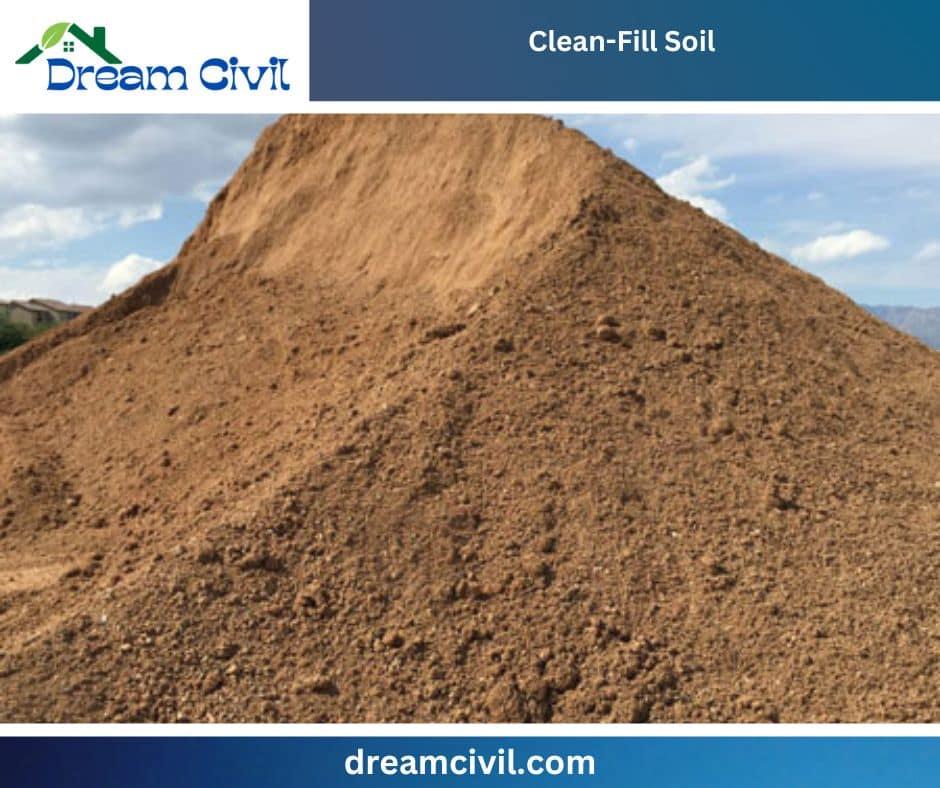
✔ Clean-fill soil is suggested for backfilling rough foundations.
✔ It should complement organic matter and pollutants and have exemplary condensation properties.
✔ It’s inexpensive and fitting for different types of foundations.
2. Gravel or Crushed Stone
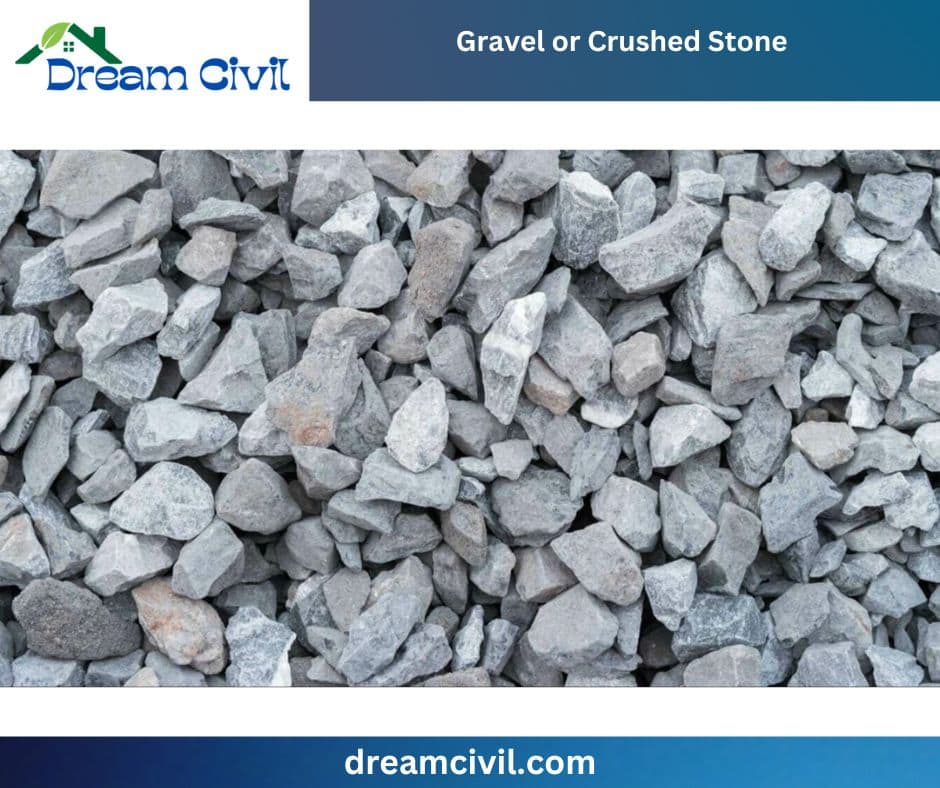
✔ Gravel and crushed stone are options for Backfill.
✔ Gravel drains well but is not erosion-resistant.
✔ Crushed stone also drains well and is erosion and frost-resistant.
3. Sand

✔ Determining a well-draining sand type essential for Backfill.
✔ Installing a drainage system around the foundation can prevent erosion.
4. Engineered Backfill Materials
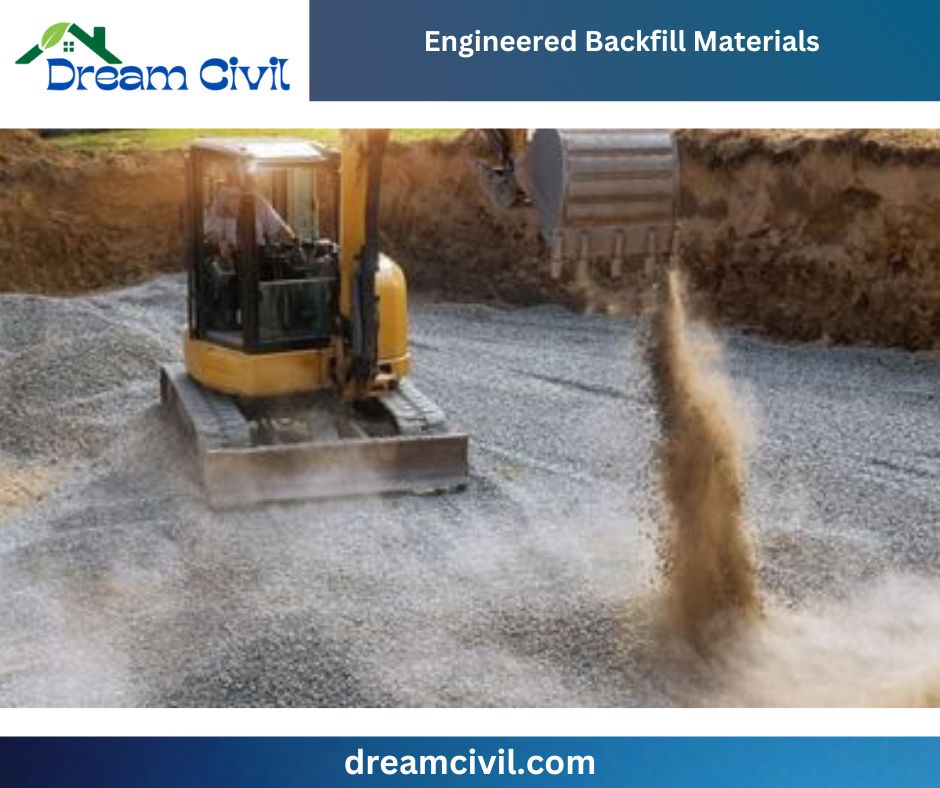
✔ In commercial and industrial projects, specially engineered backfill materials may be instructed to meet exhaustive engineering requirements, such as controlled settlement or advanced load-bearing capacity.
5. Flowable Fill
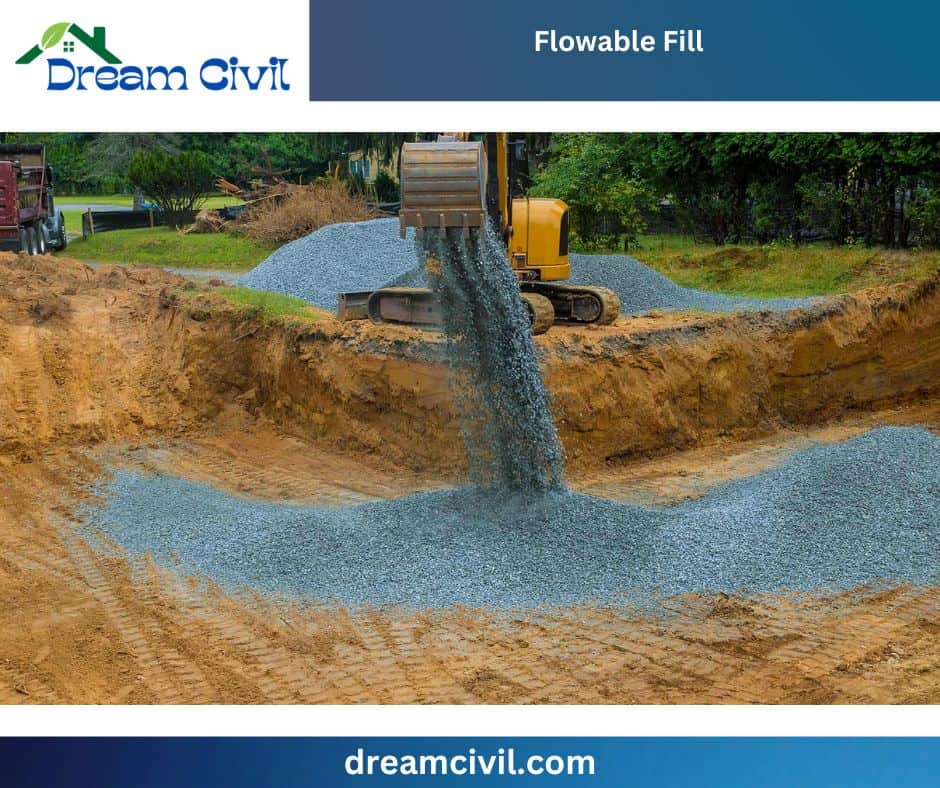
✔ Flowable fill constitutes sand, cement, fly ash, and water, characterized by self-leveling and admiringly fluid properties.
✔ This material delivers an advantageous solution for sufficing utility trenches, mainly due to its mastership to replenish irregularly shaped spaces.
✔ Moreover, it delivers some insulation and freeze-thaw antagonism.
6. Geogrid Reinforced Fill
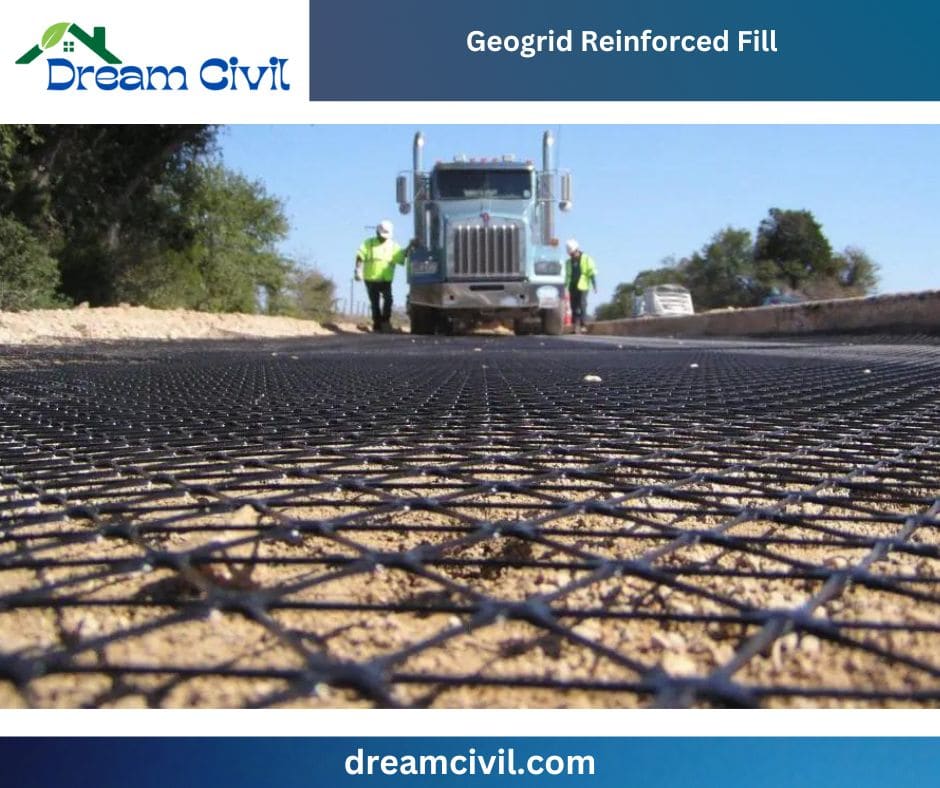
✔ Geogrids, synthetic materials, reinforce Backfill in enclosing walls or structures where sideways approval is needed.
✔ The fill material is picked based on project prerequisites.
7. Recycled Materials
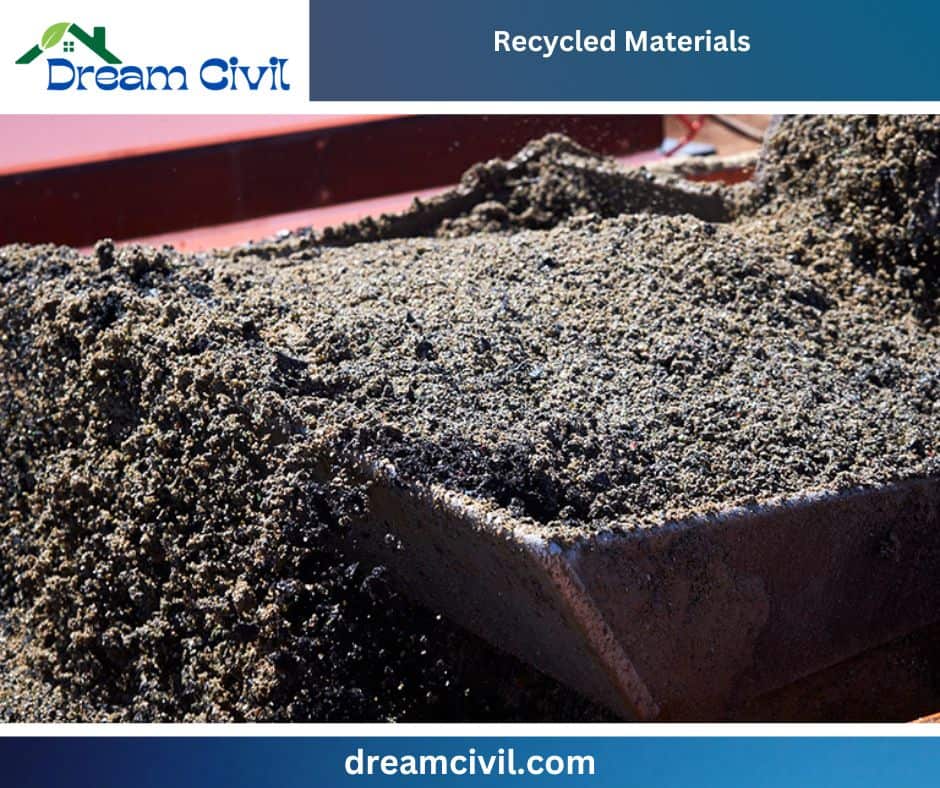
✔ In certain troubles, Backfill can be assembled from recycled materials such as crushed concrete or asphalt, resulting in a cost-effective and eco-friendly alternative.
G. How much backfill material do I need?
To determine the amount of backfill material required, you must be aware of the following:
✔ It is imperative to fill in the area specified with the appropriate length, width, and depth measurements.
✔ Indicate the specific type of backfill material that you are currently utilizing.
Calculate the volume of backfill material needed using this formula:
Volume = (Length x Width x Depth) / 27 |
To convert a measurement in cubic feet to cubic yards, a conversion factor of 27 is utilized.
For example, If you have a 15 feet-long, 8 feet wide, and 5 feet deep trench, you will need 22.22 cubic yards of backfill material.
Volume = (15 x 8 x 5) / 27 = 22.22 cubic yards |
✔ It is imperative to note that the following is a calculation and should be taken as such. The amount of backfill material required may vary depending on the soil type and foundation condition at the site. It is suggested to order a barely more significant amount of backfill material than what you indicate to be necessary to assure proper coverage.
H. How do I compact backfill material?
Table summarizing the methods of compacting backfill material:
| Compaction Method | Description | Images |
|---|---|---|
| Hand-Tamping | ✔ Suitable for small amounts of backfill material. ✔ Use a hand tamper to tamp the material in layers. ✔ Overlap the tamped areas to ensure even compaction. | 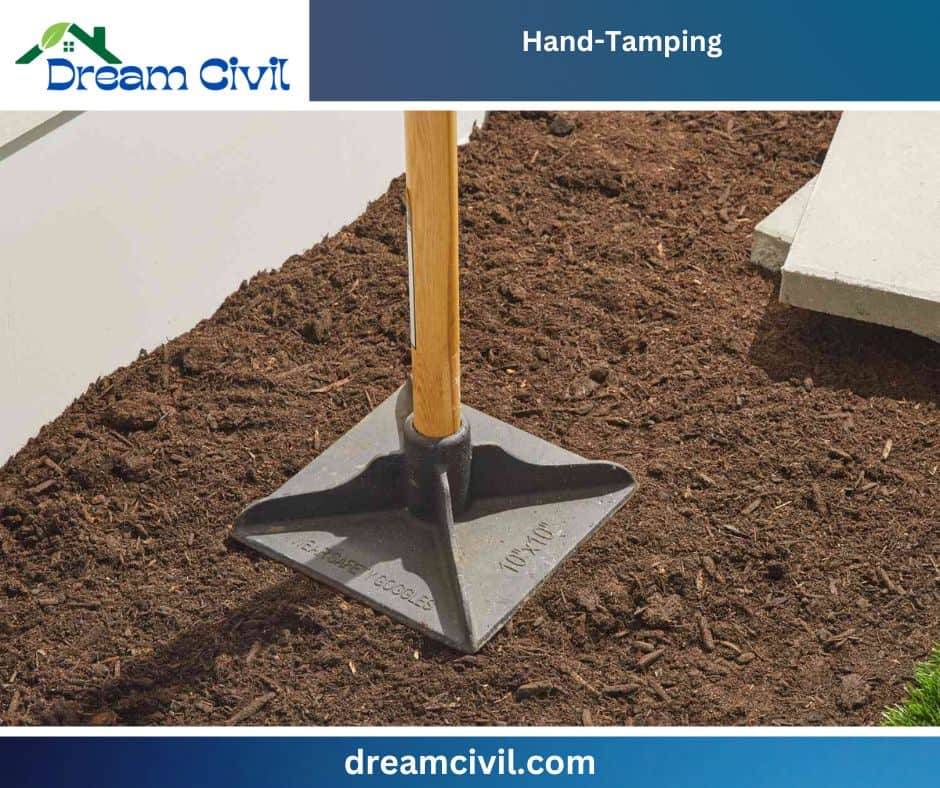 |
| Plate Compactor | ✔ Ideal for compacting more significant amounts of backfill material. ✔ Utilizes a vibrating plate to compact the material. ✔ Move the compactor slowly over the Backfill, overlapping compacted areas. | 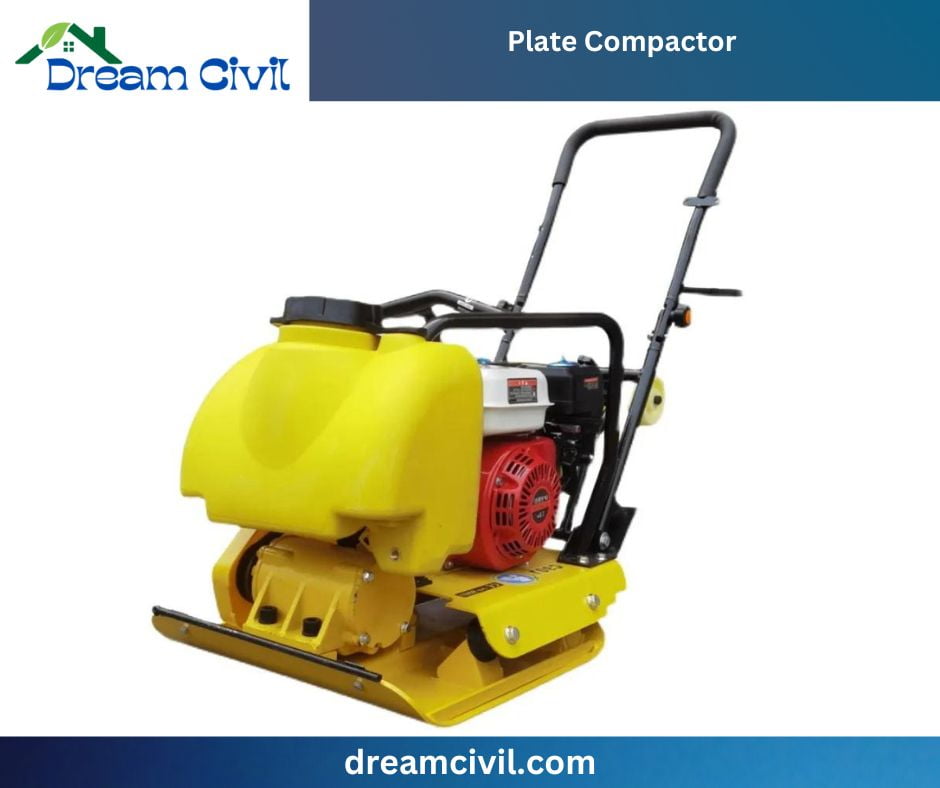 |
| Roller Compactor | ✔ Effective for compacting large areas of backfill material. ✔ Employs a heavy roller to compact the material. ✔ Move the compactor slowly over the Backfill, overlapping compacted areas. |  |
Additional Tips for Effective Compaction:
✔ Compact the backfill material in layers, ensuring each layer is no more than 6 inches thick.
✔ Assure even compaction by co-occurring the compacted areas.
✔ Strive for the lowest compaction density of at least 90%.
✔ If the backfill material is too wet, it should be authorized to dry before squeezing to perpetrate proper condensation.
✔ If the backfill material is too dry, add a small amount of water before compacting to sweeten efficiency.
I. What are the things to consider when choosing backfill materials?
| Consideration | Description |
| Compaction | ✔ The backfill material should be compactable to ensure stability and prevent settling over time. |
| Drainage | ✔ Backfill material should have good drainage properties to prevent water from pooling around the foundation. |
| Erosion Resistance | ✔ The backfill material should resist erosion, especially in flood-prone or windy areas. |
| Frost Resistance | ✔ Backfill material should resist freezing if used in regions with cold winters. |
| Cost | ✔ Compare the cost of different backfill materials from various suppliers to make an informed purchase. |
| Read Also: Earthen Dam |
| Verified by: Er. Bipana Kshetri Puri |

